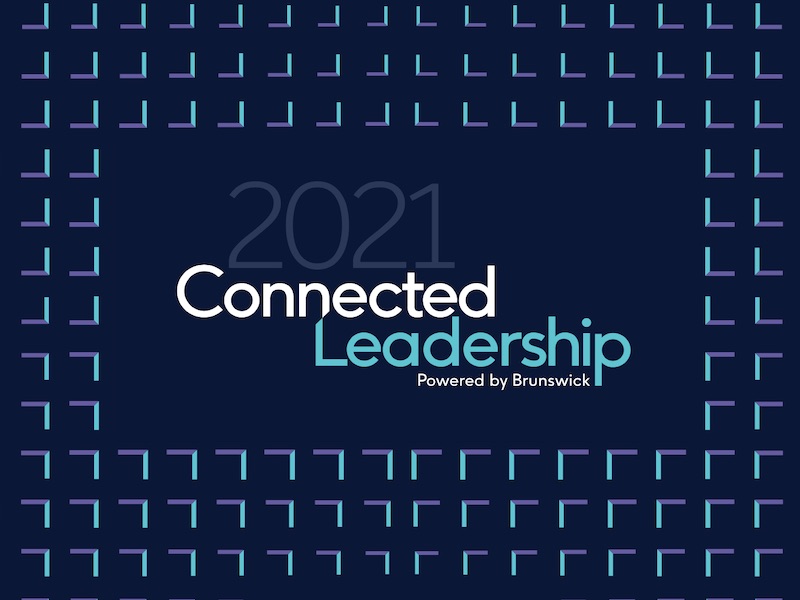Maja Pawinska Sims 11 Jan 2021 // 10:00PM GMT

WASHINGTON, DC — Senior executives and CEOs must be more accessible on social media as business continues to adapt to lockdowns, remote working and geopolitical and societal upheaval and starts planning for a post-pandemic world, according to new research from Brunswick.
The strategic communications firm’s annual Connected Leadership study for 2021 asked 5,200 readers of financial publications and 6,500 employees of companies with more than 1,000 employees, across 13 countries, about their communications expectations of corporate leaders.
It found that most employees and financial readers globally use social media to stay informed, and 74% expect company leaders to use these platforms to communicate publicly.
The research is led by Brunswick partner Craig Mullaney, who said that one of the most striking findings this year was the accelerated need, in the current environment, for CEOs to be proficient on digital and social channels.
“Whether you’re an investor or employee, you’re viewing companies entirely through a screen, and that’s an incredible challenge for business leaders to be forced to navigate,” he told PRovoke Media. “Our abstract recommendation two years ago was that business leaders needed to master a range of digital channels, and now they need to do that just to function, to lead their business, to engage teams, customers and investors.”
The challenge is exacerbated, said Mullaney, by the report’s finding that a fractured, semi-remote workforce will become the norm, and because “dislocated” employees in particular are relying more on social media for information.
“We expected to hear that people in large companies were working in different places to where they were before the pandemic, and 68% globally are. But what surprised us is that 20% expect to remain working from a different location even after the pandemic,” he said. This rose to 41% in the media, technology and telecoms sectors.
“Before, employers needed to think about two internal audiences: those in the office, and those on the frontline. Now they have to add a third audience of those who will remain working from home. If you think about how a company has to reconfigure its communications to reach these distinct work types, digital will be critical.”
The research found again that employees prefer to work for CEOs who use digital and social media (68%, rising to 82% among employees aged under 24) and trust them more (61%); this year Brunswick also asked its research cohort why.
“In every market the number one reason was accessibility,” said Mullaney. “I think it’s a psychological need that people have in a crisis, to access their leader. That’s where social media offers access and two-way, authentic, emotional communication that other channels do not.”
With CEOs facing multiple crises in the current environment, there is even greater expectation that social channels will be used to communicate: 86% of employees and 93% of financial readers said they expected to hear from CEOs on social media in a crisis, with topics including Covid response, diversity and inclusion, social issues and political issues all scoring highly.
Mullaney told PRovoke Media: “When we look at the implications of the pandemic on workforces, with lockdowns varying by market, and social and political crises from Black Lives Matter to the US election and violence in DC this week, we’re seeing now what we didn’t see two years ago. Leaders are now compelled to communicate in these moments to employees and stakeholders, and those who have the channels in place to do so and have built digital and social habits and expertise are far more effective.
“Something posted on the CEO’s personal social media in particular, especially video, has speed, scale and a different weight and credibility than a statement posted to the website, because the CEO owns it.”
Mullaney said his advice for agency and in-house corporate communications advisors would be that their business leaders or clients needed to immediately put in place the infrastructure to personally communicate through digital and social channels if they were not already. “If they are using these channels, ask yourself if their communications are as bi-directional, engaging and authentic as they can be, and whether they are using video to create a more human connection.”
He added: “When we conceived this research we were looking narrowly at CEOs, but it’s not just about the CEO any more: communicators need to think about the entire leadership team and how comfortable and effective they are in using digital and social channels to engage internal and external stakeholders, and whether they see a consistent message.”


































.jpg)

















